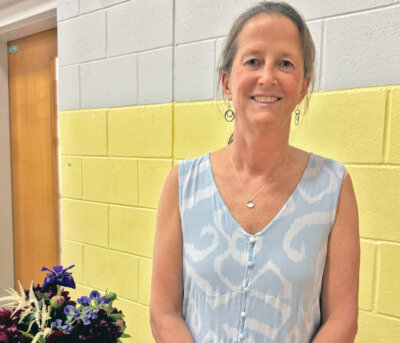Get in gear for back to school
The “Ready for School” advertising campaigns for supplies, clothing and dorm gear are full steam ahead across all media. However, following this year of untraditional learning, returning to the classroom and cafeteria does not have the same buzz as in the past. A July article, “How to Make Returning to the Office Less Painful,” in the Wall Street Journal, features Dr. Victor Carrion, a Stanford University professor of psychiatry and behavioral sciences, who explains about going back to work in the office: “What transition really means is that we need to ease into it. There’s going to be this impetus to completely return back to normal, but the reality is that life is different now. We not only want to be resilient, but we want to be adaptive.”
Similarly, returning to school can follow the four practical steps of working at the office. Families can make the process easier by going slow, acknowledging the pandemic, creating a ritual, and recognizing that one size does not fit all.
To start, taking it slow is easier said than done. As with any big decision or new adventure, there has been so much time anticipating the next step that a student might want to hit the ground running. Carrion warns, “People who jump too fast may find themselves feeling exhausted very quickly.” Setting goals that are realistic and manageable can make the transition smoother. For example, creating a calendar for time management and a list to show progress can help a student achieve and feel satisfied. The little steps taken can add up to make a big difference.
This May, the Harvard University article, “Why Getting a Good Night’s Sleep Should Be a Priority,” is a reminder that quality sleep is essential for school, work and health. Sleep can affect mood, fatigue and stress. After a year of rolling out of bed for Zoom classes, setting a goal to get a good night’s sleep can allow students to eat breakfast in the morning and feel less rushed.
Second, the pandemic continues to loom, even as schools opens their doors. Many schools are planning activities to acknowledge the loss and reflect on the overall impact of this past year. This is also an opportunity to encourage open discussion and offer support resources.
This May, Times Higher Education featured an article, “How to Readjust to Campus Life after the Covid-19 Pandemic,” from Leeds Trinity University in England, about the adjustment to reopening for face-to-face learning. Toby Chelms, head of student support and well-being, offers some tips to manage feelings. “The crucial thing to remember as you go back to campus life is that everyone’s experiences and expectations will be different.” He encourages taking time to transition and looking after oneself and each other.
Third, creating a ritual can help form a school routine. Carrion suggests that writing down this past year’s experiences will solidify these memories, while adding a twist to build goals to achieve this year. “It gives you a different point in your psychological map,” Carrion explains.
Although getting back into a routine can be challenging, being organized can balance a well-rounded life. Nebraska Methodist College publishes “5 Tips for Getting into the College Routine,” which is also applicable for high school. The five points include establishing consistency, eating healthy, having a planner to keep track of assignments, scheduling daily exercise, and making time for friends.
Finally, when going back to school, it is important to be flexible: one size does not fit all. Some students may be hesitant to return to the physical school, whereas others are eager to embrace traditional campus life. Each student has specific experiences in living with isolation and in craving socialization. Thus, there is a unique starting point for each student to transition to school.
Last March on CNN, Dr. Neha Chaudhary, in an article titled, “Prepare Your Kids Mentally for the Transition Back to School,” provided the following seven helpful tips to safely return to school: plan ahead, talk about worries, anticipate anxiety, be aware of mental health, remember that change does do not happen immediately, stay flexible, and be present and consistent. These points affect school performance, personal attitude, social interaction and family dynamics. Be patient and encouraging…. life is a journey that includes resilience.
Back to school is around the corner. Fasten your seat belts and enjoy the ride!
Margo Bartsch founded College Essay Coach, a full-service college admission business, and has been an adjunct professor of business at Champlain College and at Middlebury College.
Related Stories
Popular Stories
If you enjoy The Charlotte News, please consider making a donation. Your gift will help us produce more stories like this. The majority of our budget comes from charitable contributions. Your gift helps sustain The Charlotte News, keeping it a free service for everyone in town. Thank you.
Andrew Zehner, Board Chair









